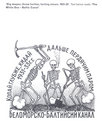day by day: a blog
September 14, 2007
kitty
OK, so you know how it is. There I was today at the wheel of my ancient Buick as it cruised asthmatically along El Camino Real. Rather than think about what I would be writing this afternoon, I made the "swerve". Nervously, acting as an agent of my unconscious, I turned on the car radio. It was an obvious, attempted diversionary tactic. And there's Terry Gross interviewing David Cronenberg about his new film, Eastern Promises, about an English woman's ensnarement in the web of the Russian mafia in London.
I've liked (a bit) some of Cronenberg's films: Spider was interesting, and of course you've got the safe choice — Dead Ringers. On radio, Cronenberg himself sounded like a true-blue twit, captious and wormy with self-regard sloshing around inside him like the captain's bathwater during a heavy swell. But perhaps you have to be that way to escape the death-sentence of being a film director? It doesn't really matter. At some level, T. S. Eliot was surely right to say that something becomes artistic when the personality of its maker is rendered extinct.
[Note to self: consider the wording of the phrases in "Tradition and the Individual Talent" more closely than you have so far. The "progress of the artist" (not of "art) is a "continual self-sacrifice, a continual extinction of personality." These are enigmatic ideas: an ever-renewing "self-sacrifice" — how can a sacrifice not come to an end? and a "continual extinction" — isn't something either extinct or not? Can there be, except in language, such an endlessly intermediate state as a "continual extinction"? More thought from below-decks on this matter as soon as possible, please....]
In any case, I won't be seeing the Cronenberg film, mainly because, although I love movies, Siri and I almost never go out to the cinema. Why, when we're finally alone, would we sit in the darkness not talking? I won't even take the film in as a DVD in six months' time. We (or I) watch DVDs almost solely with the kids. We enjoy all the classics: Gilligan's Island: The Opening Series, Star Trek: The Complete First Season, every single one of the Pixar films, The Wizard of Oz. After a minimum of 60 attentive viewings, I feel that I know the second half of the Star Wars cycle so well that I could give George Lucas a quiz on his films which he would find hard to complete to either his or my satisfaction.
Recently, I've been trying guilefully and indirectly to interest the boys in some of the TV doll-serials (Thunderbirds in "Supermarionation"&trade, for example) which I poured into my mind as a child. The thing is, I'd be "interested in" watching again now in middle age. Hugo and Owen have no idea yet that I've just managed to get them (ie, me) a complete set of the Joe 90 series on DVD for about $4! Tight! (That's what my younger son, Owen, says kids say nowadays as an expression of approval instead of "Sweet!")
I'm a bit nervous about their reaction to Joe 90, a series which features the adventures of a pliant, blond-haired boy whose father has a machine capable of transplanting the brain of another, usually gravely endangered, person into his son's head at the beginning of each episode. (I know, it sounds a bit odd; don't worry: Joe gets his own mind back at the end of each installment. I think....) I'm nervous because what excuse will I have for watching the series if the kids say they don't like it? And how will I bear up if they say it's boring?
As for more classically-defined artistic filmic fare, well, once the boys are in bed, Siri and I are usually so exhausted that we do little more than creep slowly to our own cot, feeling like dazed shipwreck survivors crawling wearily up the beach, too tired even to gasp "We're safe!" So it's "Нет, спасибо" to Eastern Promises even in its DVD-format, as far as I'm concerned.
But on the radio this afternoon Cronenberg did manage to murmur a few words about some of the exotic-sounding books he'd used during his research for his new film. So, when I breezed through Stanford's library a bit later in the day, I took a look at one of them: Danzig Baldaev's, Sergei Vasiliev's and Alexei Pluster-Sarno's Russian Criminal Tattoo Encyclopedia Volume II (Fuel Publishing, 2006). It's a remarkable book! Most memorable are Baldaev's sketches of the "tail coats with medals", as tattooed bodies are called in Russian criminal slang, which he saw during his several decades of service on the Soviet and Russian prison systems.
Alexei Pluster-Sarno writes in his essay accompanying the images that these "tattoos broadcast certain information to the world of thieves simultaneously from many points on the surface of the thief's body, and so the thief's 'speaking' is, as it were, located in every point of his body. Ever one of his tattoos is a separate narrator, a separate story." Positioning is crucial. Thus "shoulder straps" articulate the thief's convictions and his "position" in the criminal hierarchy, signs on the toes provide details about the place where the prisoner has been incarcerated, "rings" on the fingers describe the thief's professional identity, while
Signs on the chest are more serious and carry more status. Most often these are stars with between seven and sixteen points, with skulls, heads of cats, lions, devils or wolves, crosses, candles, crowns, daggers, double-headed eagles, wings, the signs of the suit of spades or clubs and several other central thieves' symbols."
During the early decades of the Soviet regime, criminals would often have a large image of Lenin, and then Stalin, tattooed onto the centre of their chests, in the partly-superstitious, partly-canny belief that no-one would want, or dare, to shoot a Soviet leader in the face.
Thus, the tatoos constitute a complete "portrait" in visual and verbal ciphers of the thief himself.
I think that most of the tatoos are a little too racy for me to reproduce. But here are a couple of restrained examples of Baldaev's drawings of tattoos from the early Soviet period. (He found them both on very old men.) The one on the left, as Baldaev's note makes clear, is an acronymic cipher. Many of the tattoos are overtly, smirkingly polysemous — as intricate verbally as they are finicky and involuted visually. This one's owner/wearer acquired it at the age of 30 in a Soviet labour camp in 1931.
The one on the right, another shoulderblade tattoo from exactly the same period, shows that the owner/wearer worked on the vast White Sea-Baltic Canal near what was then Leningrad (St Petersburg before and after). The first major construction project in the Soviet Union to be supervised by the GULAG administration and to be built entirely by prisoners from the "corrective labour camps", the "Belomorkanal" as it was known, probably cost around 100,000 lives. (There is a beautiful but utterly mystificatory photograph by Rodchenko of construction workers labouring on the canal while a small orchestra plays sweetly to encourage their endeavours.)
Well, it seems like my tactic in switching on the radio worked quite nicely, didn't it? From my grateful unconscious, then — thanks, DC!
Posted by njenkins at September 14, 2007 01:51 AM
With the exception of interspersed quotations, all writing is © 2007-09 by Nicholas Jenkins




